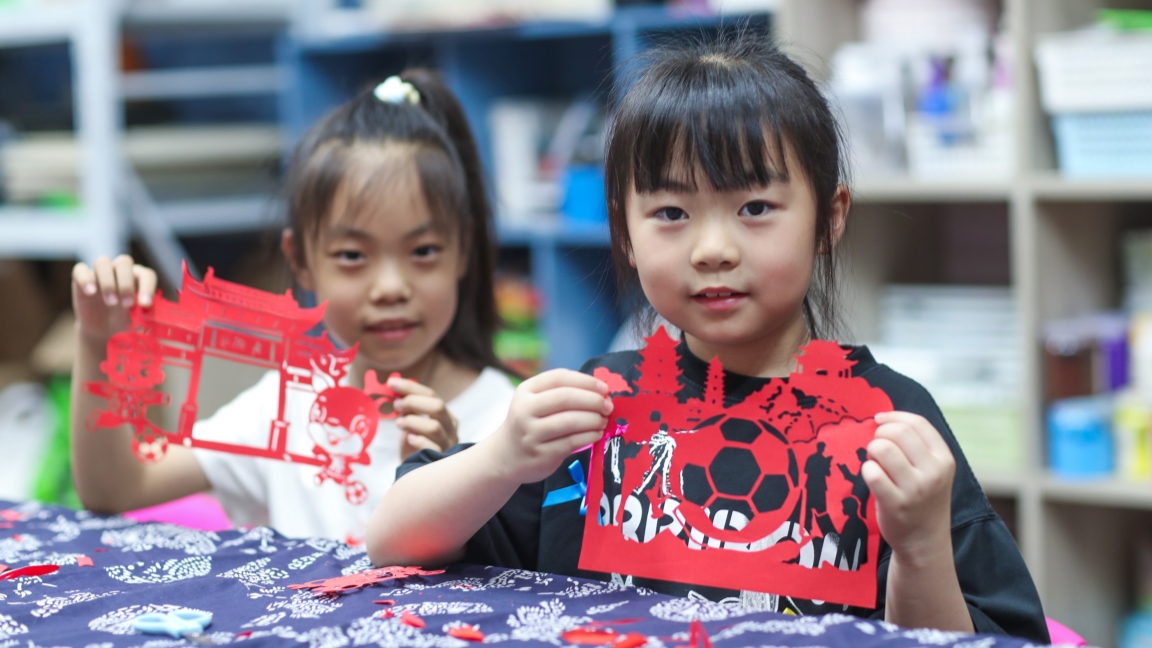
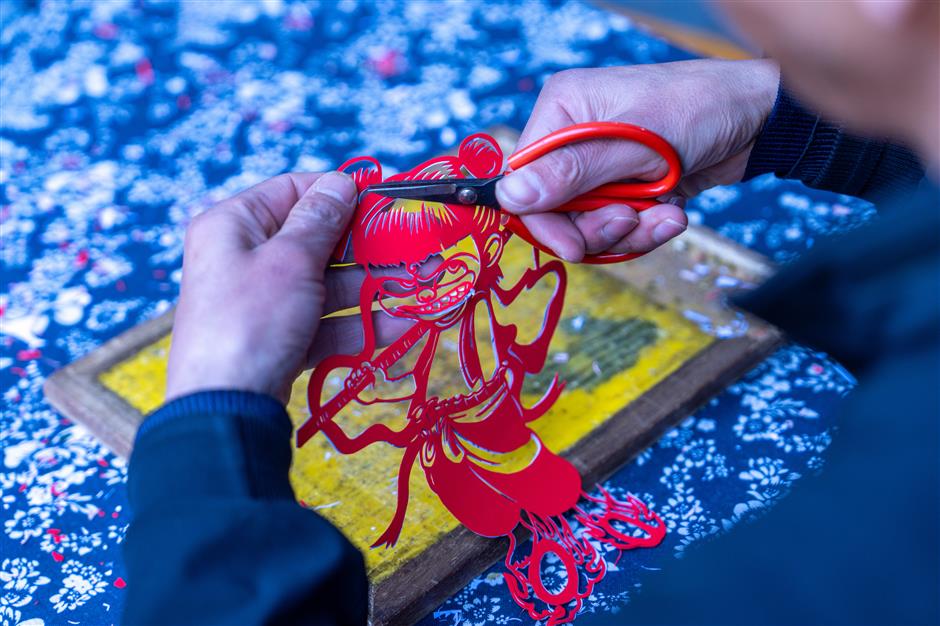
All it takes is a pair of scissors, a sheet of paper and skillful hands to turn the ordinary into a delicate paper-cutting masterpiece.
With nothing more than a sheet of paper and a pair of scissors, Chinese artisans have turned a humble craft into a centuries-old art form – paper cutting that quietly records the joys, rituals and esthetics of daily life.
China was the first country in the world to produce paper, which was believed to be credited to Cai Lun, a eunuch during the Eastern Han Dynasty (AD 25-220). In AD 105, Cai improved the papermaking method. He used worn-out fishnet, tree bark, bits of rope and rags as raw materials.
Yet long before the invention of paper, the Chinese were already cutting decorative patterns into materials like gold foil, leather, silk and even leaves. These early designs suggest that the impulse to transform flat surfaces into intricate storytelling canvases has deep roots in Chinese culture.
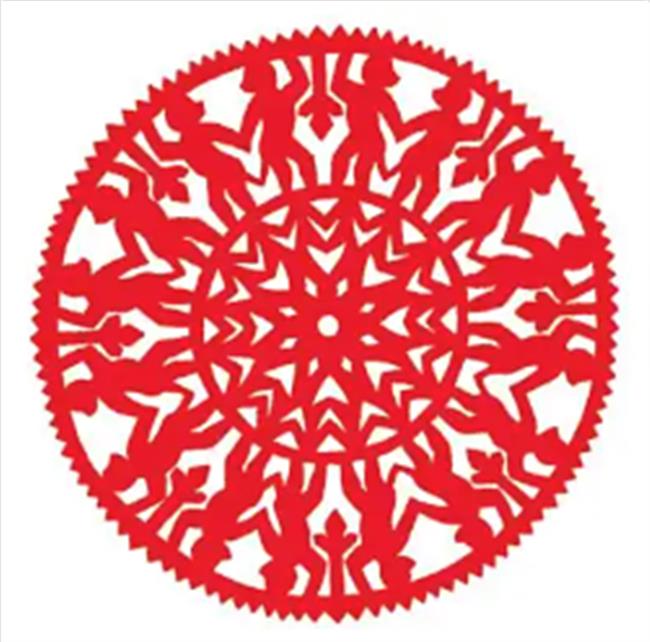
The restored image showcases the world's earliest known paper cutting featuring symmetrical monkeys.
The earliest surviving paper cuttings, which date back to the Northern Dynasties (AD 386-581), were discovered in a tomb in Turpan, northwest China's Xinjiang Uygur Autonomous Region, in 1959. The artifacts featuring symmetrical patterns like horses and monkeys offer rare insight into the art's ancient origins.
By the Tang Dynasty (AD 618-907), paper cutting had already taken root in everyday life. Famous poet Du Fu alluded to it in his verse "cut paper summons my soul," hinting at its role in spiritual and emotional expression.
Six Tang Dynasty paper cuttings collected by the British Museum offer a glimpse into the refined esthetics of that time. Featuring flowers, these paper cuts were found in the Library Cave at the Mogao Grottoes in Dunhuang, northwest China's Gansu Province.
Flowers were a central motif in Dunhuang art, appearing in celestial scenes, textile patterns and architectural decorations. According to the introduction by the British Museum, most feature glue marks on the back, suggesting they were once affixed to walls or architectural surfaces, serving both decorative and symbolic roles in their original context.
Other stunning examples, such as "Double Deer Pagoda" and "Buddha Pagoda," were also discovered in the Mogao Grottoes. These works were mainly used in Buddhist rituals, adorned statues, altars and monasteries.

The six Tang Dynasty paper cuttings housed in the British Museum feature floral designs.
Paper cutting flourished through the Song Dynasty (960-1279) and into the Ming (1368-1644) and Qing (1644-1911) dynasties. The art became more widely available, expanding beyond spiritual use into the decorative arts. People used paper cuttings to adorn windows, lanterns, mirrors, embroidery patterns and even ceramics.
From rural villages to imperial palaces, the craft was everywhere. In the bridal chamber of the Qing Dynasty's Kunning Palace, walls were decorated with auspicious motifs of dragons and phoenixes cut from paper.
Paper cutting became a storytelling tool in modern China. Artists like Chen Shuliang and Xia Feng used paper cutting to depict scenes of daily life, labor and wartime resistance. The scissors, once used for folklore and decoration, now carved out narratives of the people.
In 2009, Chinese paper cutting was added to the Representative List of Intangible Cultural Heritage of Humanity by the United Nations Educational, Scientific and Cultural Organization.
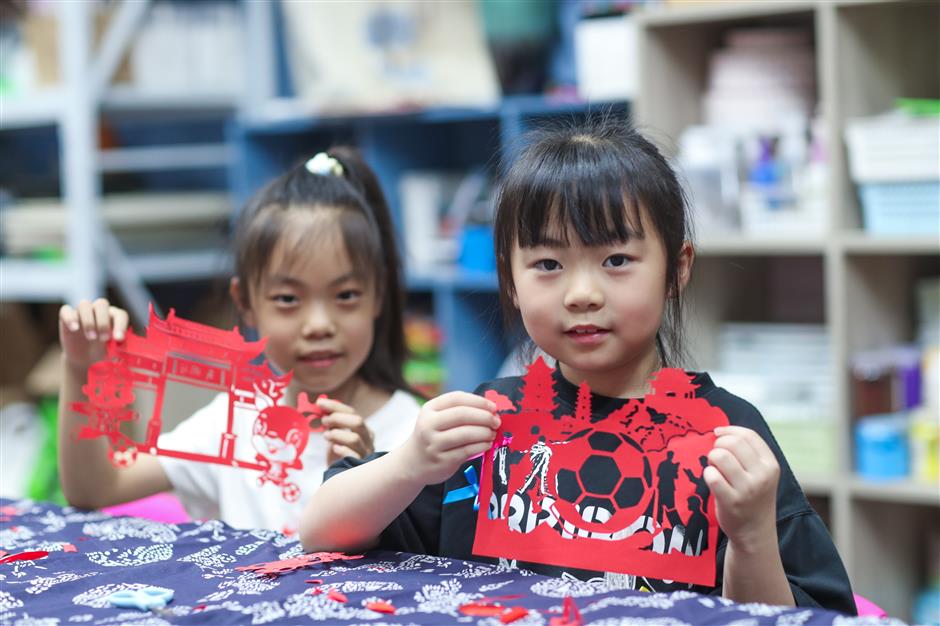
Students from Jiangsu Province display their football-themed papercutting creations.
Haipai paper cutting: Shanghai's modern twist on tradition
Imagine strolling through 1930s Shanghai, where artisans sat at bustling street corners, their scissors flying through paper to create everything from delicate embroidery patterns to trendy Hollywood-inspired designs.
In the early 20th century, as Shanghai blossomed into a cosmopolitan metropolis, a new kind of paper cutting emerged in Shanghai – the Haipai style.
What started as folk art for decorating shoes and doorways quickly evolved into something unique in Shanghai. As Western films, fashion and design flooded the city, so did new inspiration. Paper cutting artisans no longer confined themselves to traditional flowers and birds. They captured the vibrant energy of city life.
In the 1930s to 40s, fashion-conscious Shanghai women began requesting paper-cut designs that mirrored the trends they saw on the big screen. Artists met the demand by crafting silhouettes inspired by hit movies like "Bathing Beauty" and "Twin Sisters." Paper cutting became more than decoration. It became pop culture.
This was when the art form split into two roads. Some artists stayed loyal to traditional motifs, while others turned their scissors toward the snapshots of modern life: Art Deco furniture, stylish women in qipao dresses with marcelled hair and even the latest hairstyles and accessories.
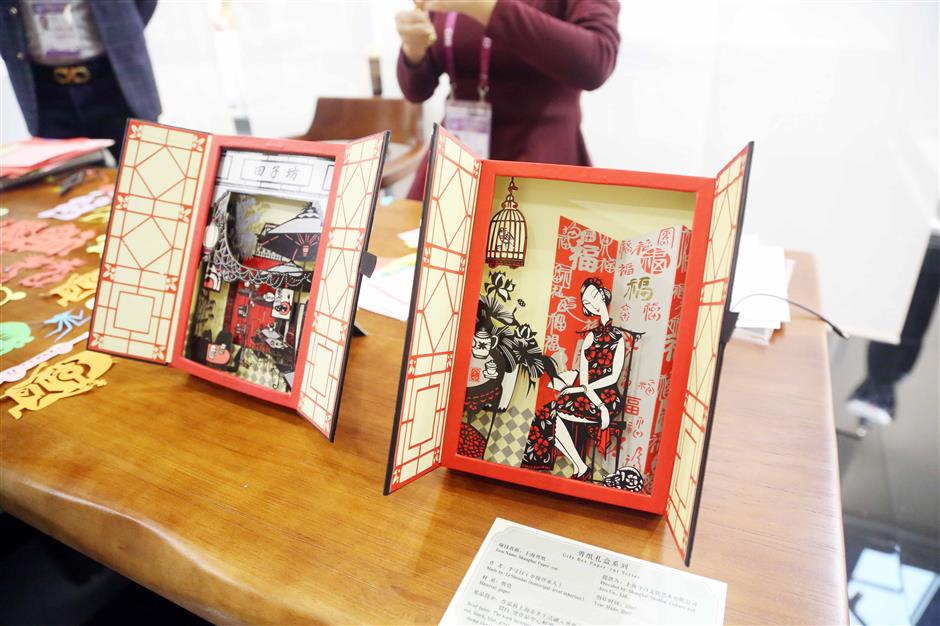
Shanghai artist Li Shoubai's paper cuttings capture a woman in qipao and the charm of urban life.
Masters of the Haipai-style paper cutting like Wang Zigan blended northern boldness with southern finesse, creating works that ranged from birds to urban scenes. Meanwhile, artist Lin Ximing treated paper like a painter's canvas, blending paper cutting with painterly techniques.
Haipai-style paper cutting highlights several signature patterns, including the jagged "jigsaw teeth" that mimic animal fur, the graceful "crescent moons" used for fish scales, and geometric flowers popular on shoes and handkerchiefs.
In 2008, Shanghai paper cutting was recognized as a national intangible cultural heritage.

